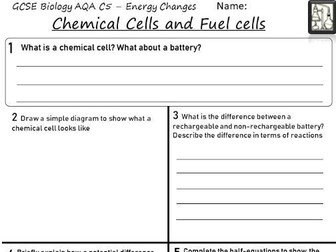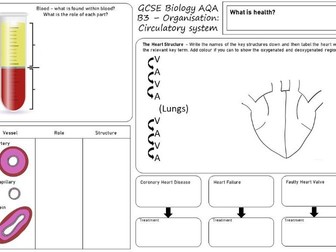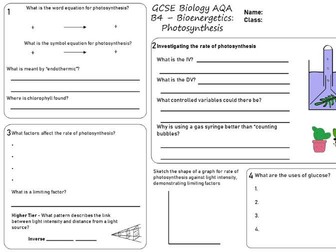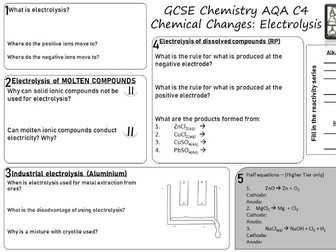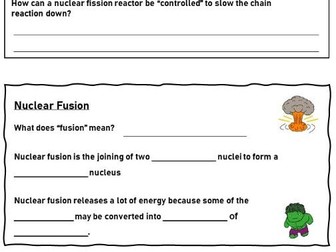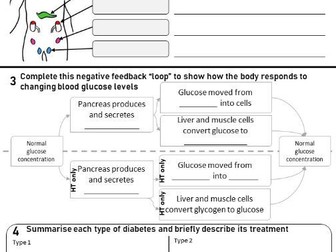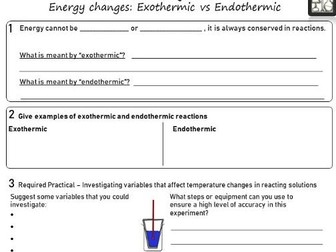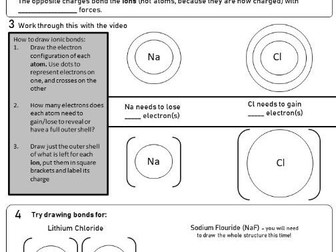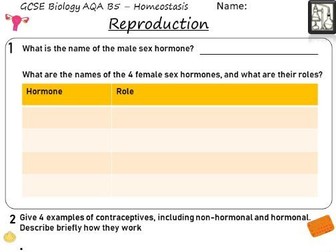Anaerobic respiration (SNAB/Edexcel A2)
A PPT resource used in a lesson about anaerobic respiration - the formation and fate of lactate/lactic acid. Also comments on other anaerobic pathways eg. use of creatine phosphate.<br />
<br />
Used for Edexcel Biology or SNAB, but may be useful in OCR.<br />
<br />
The questions referred to at the end are from the SNAB text book.
Edexcel Biology (2008-2015) A2 exam question references for revision (6BI04 / 6BI05)
This document contains the specification of the Edexcel Biology or SNAB (Salters Nuffield Advanced Biology) A2 course. What I have then done is look through the exam papers up to June 2013 and linked in the questions from these papers to the specification points where possible.<br />
<br />
It has been very useful in providing to students to help them with their revision for specific areas, but also in planning by accessing and using the questions as plenaries/starters in lessons.<br />
<br />
It includes the specification points from Topic 5, 6, 7 and 8 for the exams 6BI04 and 6BI05. Also includes reference to the pre-release material questions from the Unit 5 paper. <br />
<br />
Any feedback gratefully received.
Enthalphy Energy Calculations worksheet - C5 AQA GCSE Chemistry (Energy Changes Topic) Revision FREE
<p>A worksheet with exam questions to cover the ideas of how to calculate energy change. Includes:</p>
<ul>
<li>The term BENDOMEX (Breaking bonds is ENDOthermic, Making bonds is EXothermic) for remembering where energy is needed/released in reactions</li>
<li>How to determine whether a reaction is endo/exothermic based on the total energy change</li>
<li>Steps to calculate the energy change in a reaction</li>
</ul>
<p>The worksheet is made to complement the video at <a href="https://www.youtube.com/watch?v=skj2GQ8xfQk" target="_blank" rel="nofollow">https://www.youtube.com/watch?v=skj2GQ8xfQk</a></p>
Chemical cells and fuel cells worksheet - AQA Chemistry GCSE Revision/Remote Learning
<p>A worksheet and complementary video covering:</p>
<ul>
<li>What a chemical cell/battery is</li>
<li>The difference between a rechargeable/non-rechargeable cell/battery</li>
<li>How a hydrogen fuel cell generates a potential difference</li>
<li>Half equations</li>
<li>Evaluation of the pros/cons of the various cells</li>
</ul>
Circulatory system revision sheet - AQA GCSE Biology
<p>A revision sheet summarising the Circulatory system part of the organisation topic for AQA’s GCSE Biology. It is shaped by the specification and matches the revision video on the topic at <a href="https://youtu.be/JpmxmDCHHX4" target="_blank" rel="nofollow">https://youtu.be/JpmxmDCHHX4</a></p>
<p>A perfect home-work or revision task.</p>
<p>It contains:</p>
<ul>
<li>What is found within blood</li>
<li>Structure of blood vessels, including arteries veins and capillaries</li>
<li>The heart structure</li>
<li>Pacemaking cells</li>
<li>Heart disease, heart failure, faulty hea rt valve</li>
</ul>
undefined
Covalent bonding - AQA Chemistry GCSE revision/worksheet
<p>A worksheet for covalent bonding with some bond drawing practice and a space to work on different types of covalent structures (small and giant, including allotropes of carbon, designed around the specification for AQA GCSE Chemistry/Combined Science in the Bonding topic.</p>
<p>This complements a revision video and could be completed alongside or after watching the video as part of home-learning or revision work.</p>
Respiration AQA GCSE Worksheet - Biology Revision/Remote Learning
<p>A worksheet and complementary video covering:</p>
<ul>
<li>Aerobic respiration</li>
<li>Anaerobic respiration</li>
<li>Response to exercise and the removal of lactic acid</li>
<li>Metabolism</li>
</ul>
<p>The complementary video is found at <a href="https://youtu.be/E4BJjk4Y1Ro" target="_blank" rel="nofollow">https://youtu.be/E4BJjk4Y1Ro</a></p>
Photosynthesis revision sheet AQA GCSE - bioenergetics
<p>FREE worksheet / revision sheet for Photosynthesis, required practical, limiting factors and uses of glucose. The worksheet complements a video found at <a href="https://youtu.be/8zaeT-7HebQ" target="_blank" rel="nofollow">https://youtu.be/8zaeT-7HebQ</a></p>
<p>Could be used as a revision activity or remote lesson.</p>
Electrolysis revision sheet - AQA Chemistry Chemical Changes
<p>A revision sheet for electrolysis with some half-equation practice, designed around the specification for AQA GCSE Chemistry in the Chemical Changes topic.</p>
<p>This complements a revision video and could be completed alongside or after watching the video as part of home-learning or revision work.</p>
<p><a href="https://www.youtube.com/watch?v=VT7vZbJClxE" target="_blank" rel="nofollow">https://www.youtube.com/watch?v=VT7vZbJClxE</a></p>
Metallic bonding worksheet and video - AQA GCSE Chemistry Bonding
<p>A worksheet/revision sheet for metallic bonding, designed around the specification for AQA GCSE Chemistry in the Bonding topic.</p>
<p>This complements a revision video and could be completed alongside or after watching the video as part of home-learning or revision work.</p>
<p><a href="https://youtu.be/aAo2NSMnVxk" target="_blank" rel="nofollow">https://youtu.be/aAo2NSMnVxk</a></p>
Nuclear Fission and Fusion - GCSE Physics AQA
<p>A worksheet and complementing video for revision/remote learning on:</p>
<ul>
<li>Nuclear fission</li>
<li>Nuclear fusion</li>
</ul>
<p>I hope it helps. Any feedback gratefully received.</p>
Endocrine system and Blood Glucose - B5 Homeostasis AQA GCSE Revision Worksheet
<p>A worksheet or revision sheet useful for home or remote learning. It covers:</p>
<ul>
<li>What are hormones?</li>
<li>What glands are found in the endocrine system and where they are</li>
<li>The role of negative feedback in regulating blood glucose</li>
<li>The role of insulin and glucagon</li>
<li>Type 1 and Type 2 diabetes</li>
</ul>
<p>I have linked a video I have used for remote learning, which completely supports this worksheet.</p>
<p>Any feedback gratefully received!</p>
AQA C5 Exothermic Endothermic and Reaction Profile Worksheet - Revision/Remote Learning
<p>Covers:</p>
<ul>
<li>Introduction to the terms exothermic and endothermic</li>
<li>Examples of these reactions from the specification</li>
<li>A brief overview of the required practical</li>
<li>Drawing reaction profiles for exo/endothermic reactions</li>
</ul>
<p>Supported and complemented by my video at <a href="https://youtu.be/Q_GU0ES4RII" target="_blank" rel="nofollow">https://youtu.be/Q_GU0ES4RII</a></p>
Ionic Bonding Worksheet AQA GCSE - Revision/Remote Learning
<p>A worksheet covering:</p>
<ul>
<li>What a chemical bond is</li>
<li>How ionic bonds are formed</li>
<li>How to draw ionic bonds</li>
</ul>
<p>The worksheet is complemented by the video <a href="https://youtu.be/TMa4RwflHyc" target="_blank" rel="nofollow">https://youtu.be/TMa4RwflHyc</a></p>
Reproduction Worksheet and supporting video - B5 Homeostasis AQA Biology
<p>A worksheet and complementary video for the topic of Reproduction in Homeostasis (AQA Biology). Includes:</p>
<ul>
<li>Role of hormones in reproduction</li>
<li>Role of hormones in the menstrual cycle</li>
<li>Types of contraception</li>
<li>Fertility treatment</li>
</ul>
<p>Please leave some feedback so I can improve these sheets/videos for future.<br />
Thanks :)</p>
